
Each autumn, Practical Sailors staff reviews the Best Choice winners from the previous 12 months of gear tests and selects 10 to 15 products that stood out above the rest. This year, the bulk of our testing focused on trouble-shooting failed safety gear, challenging traditional lore, and seeking out inexpensive do-it-yourself solutions to common problems. Our testers looked into everything from unconventional approaches to sail repair to the best option for marine air conditioning.
If you are drawn to hi-tech gadgets or must-haves that fix a problem you didnt know existed, this years list will be a disappointment. But if youre in search of gear that will reliably work when you need it, youve come to the right place. Here -with already too much ado-we present Practical Sailors 2018 Gear of the Year Awards.
Mahina Expeditions

Sail Repair
In the June 2018 issue, we completed a two-year-long test of various sail repair options for Dacron (polyester) sails. We tested tapes, epoxies, and adhesive/sealants, including several products marketed specifically for sail repair.
Our winner in the tape category was Bainbridge Polyester Sail Repair Tape, which seemed to improve with time, welding itself to the sail. We also tested the Bainbridges Nylon Repair Tape, which we recommend for spinnakers.
Although the strongest tape failed at around 90 pounds, several of the adhesives proved stronger than the sailcloth, which tore at 150 pounds of load. Our top performer was a flexible epoxy from Dr. Sails. The fast-drying epoxy was considerably more flexible than the other epoxies, did not show through the fabric, and was not as messy as other repairs.
Dr. Sails epoxy is many times more expensive than similar two-part glues, such as West Systems G-flex epoxy, or polyurethane adhesives such as Loctite PL S40,but the 8-minute cure time makes it more practical, and it was far more durable.
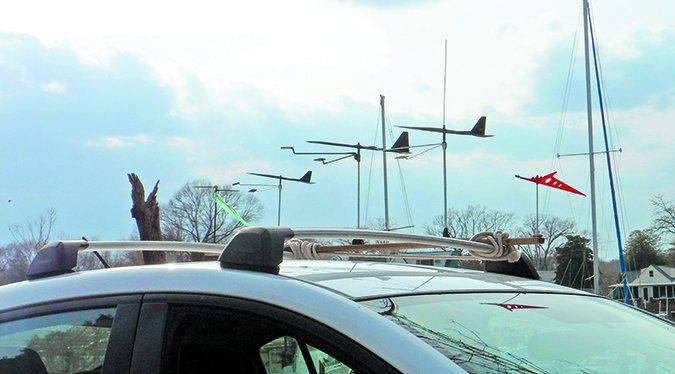
Drew Frye
Many cruising sailors might balk at Dr. Sails higher price, but the company deserves kudos for identifying and meeting the specific needs of a sailor. For those who prefer a cheaper option, the November 2017 and June 2018 issues online offer some repair options that arent as fast or clean, but get the job done.
Wind Instruments
For our wind indicator comparison in the January 2018 issue, we looked at a variety of masthead and spar-mounted vanes from Blacksmith, Davis, and Schaefer. We tested all the instruments both in a controlled environment and in use on our test boat.
Sensitivity and proven durability made the Davis Windex our Best Choice for a masthead indicator for cruisers, and the Windex Sport for smaller boats.
The most popular masthead wind indicator, the Davis Windex is the gold standard for detecting wind direction. These rugged, lightweight sensors have perfect balance and a sapphire bearing, and the spike at the top of the Windex is an effective bird deterrent. The Windex Sport is a smaller version, perfect for smaller boats and some bow installations.
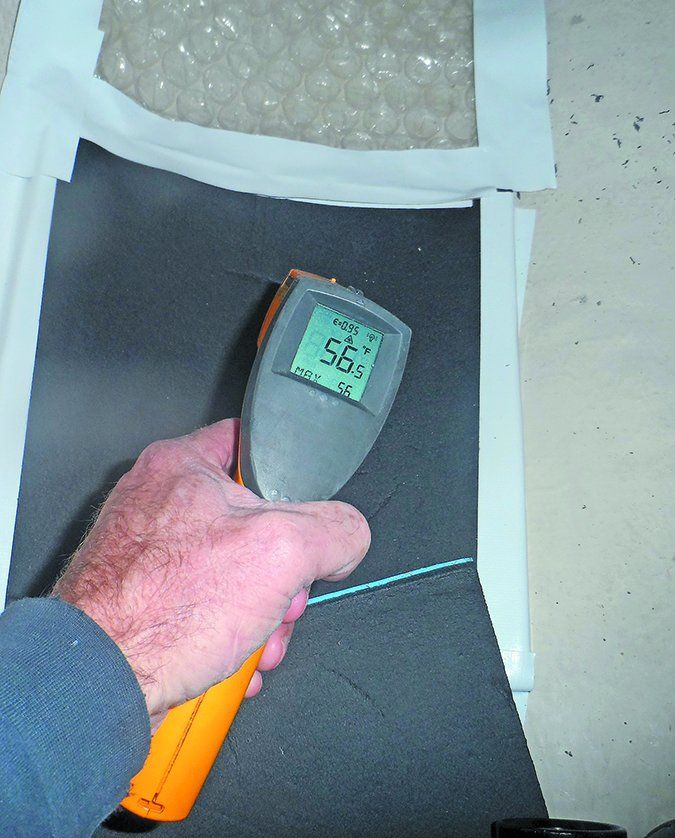
Drew Frye
Sail Cleaners
Many sailmakers are happy to clean our sails for a fee, but we wanted a DIY option. In the February 2018 issue, we sought a readily available cleaner and a method that would make the job both cheap and easy. We tested CS-530 (from Challenge Sail Cloth), Oxiclean Powder (Church & Dwight), Sail Wash (Wash Safe), Mold and Mildew Cleaner (Iosso), Canvas and Sail Cleaner (Star brite), and a homemade concoction we call Formula B (1 quart hot water, 1 tablespoon baking soda, 2 tablespoons washing soda, 2 tablespoons Borax, 2 tablespoons TSP).
In the first test, we compared several percarbonite cleaners, but none stood out. All of these products were powders, and required 2-8 hours to work. We saw good results from CS-530 Mold and Mildew Cleaner, Sail Wash, and Iosso Mold and Mildew Cleaner, but laundry-room Oxiclean Powder, our Best Choice in this comparison, did just as well.
We also compared common surfactants, useful for quick cleaning. With additional soaking time, these performed about the same as percarbonate cleaners. Star brite Canvas and Sail Cleaner proved to be reliable on a range of fabrics. It cleaned surface stains well, but struggled against the deeper stains.
Our super-cheap, home-made Formula B also was effective, requiring an additional 10 minutes or so of soak time to produce results comparable to those of the Star brite product.
Hull Insulation
In search of better thermal insulation below and above the waterline, in January 2018 we tested several insulating materials, including window covers, bubble wrap, fiberglass, and several closed-cell foam materials. Using an R-value test rig and exposing sample materials to a temperature difference, we were able to compare insulating efficiency.
We found a number of cheap and easy solutions for small jobs (bubble-wrap proved particularly useful on windows), but for bigger hull insulation projects, Armaflex Armacell and Aerocell AP best met the needs of most boat insulation projects.
The self-adhesive Armacell grabs permanently-even in damp locations. For tight spaces, we recommend that you use contact cement, and install the pieces before the glue fully dries. (Armaflex 520 contact adhesive is recommended.)
We tested the 1/2-inch Armacell and the 3/4-inch Aerocell AP. Based on data collected during a cold winter on Chesapeake Bay, -inch Armacell maintained comfortable boat temperature and eliminated condensation, and the more expensive -inch will be a better choice for those in very cold climates.
Winch Pawl Oil
Following up on our 2016 test of winch greases, in the March 2018 issue we began a search for more durable pawl oils, lightweight lubricants that keep these safety-critical clicking parts working freely, but have trouble lasting a single season.
There are a number of lubricants that would work for this application. We limited our testing to designated winch pawl oils and to readily available lubricants and gear oils with all the right properties.
Along with lubricity and corrosion protection, the test compared evaporation rates and the ability to resist washing out. The dedicated pawl oils from Harken and Lewmar performed as advertised, and Mobil 1 5W-30 Motor Oil proved to be a budget- priced alternative. The best choice overall was Valvoline High Performance 85W-140 Gear Oil.
Evaporation was very low and oxidation stability good. Because of increased viscosity, gear oils go on thicker, but they did not inhibit pawl movement, even at sub-zero temperatures.
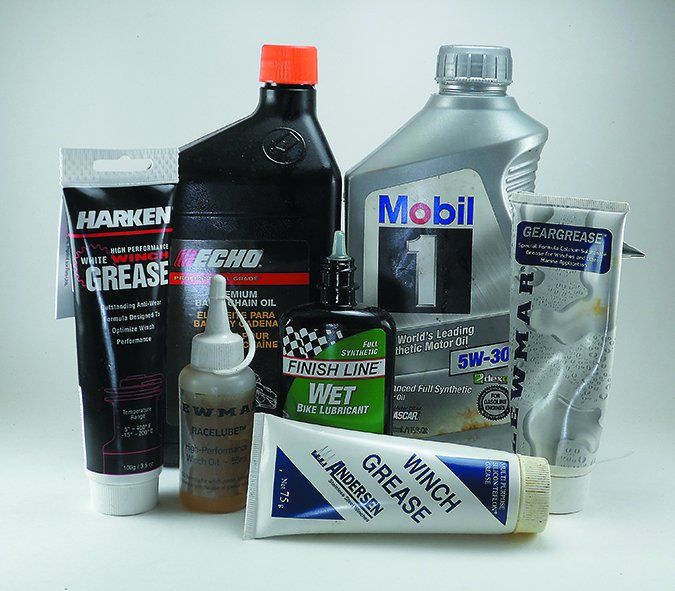
Drew Frye
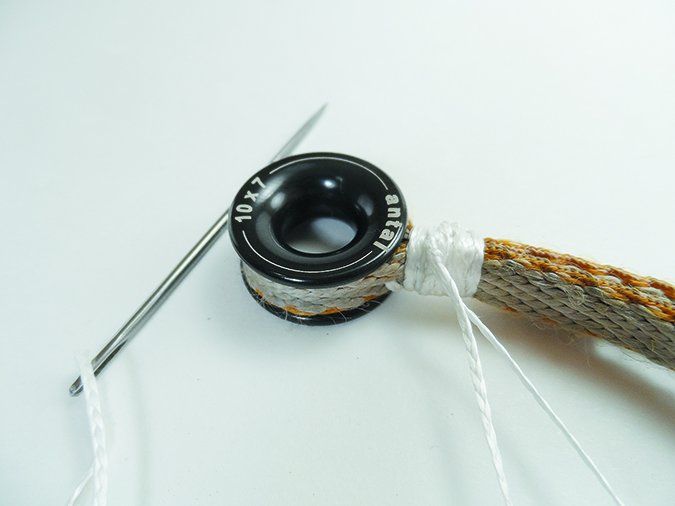
Drew Frye
Low Friction Rings
Hand-in-hand with high molecular weight polyethylene (HMPE) lines, highly polished low-friction rings have been gaining popularity for use in a wide range of standing- and running-rigging applications.
We compared low friction rings from six manufacturers and rated smooth-running Antal rings as best. Superbly finished with a nice deep groove and a lip to hold the securing loop in place, the Antal rings also had the lowest friction.
Air Conditioning

Drew Frye
In the heat of summer, we drilled into the topic of chill, comparing portable and permanently installed marine air conditioners, including two models from Dometic, and two types of portable air conditioners-upright and window-mounted-designed for the home or office.
In the end, testers concluded that each type would work well for common onboard scenarios, but that a permanently installed unit delivered the best combination of reliability and durability for long-term cruising in tropical climates.
When it comes to permanent systems that wont break your bank account, the Dometic Turbo series fit the bill. Dometic makes a range of models in this line beginning 3,500 BTUs. We tested the 10,000 BTU model. Installation was time-consuming, but the several days of boat yoga were well worth it. The unit is quiet and efficient, and the low power draw is a bonus when staying at marinas with modest shorepower service.
Anti-Seize Coatings
Few things are as frustrating as embarking on a repair project and getting stalled by a seized bolt. In our July 2018 issue, we compared a variety of anti-seize coatings, ranging from Lanoline-based goops to Teflon-infused gels.
To test effectiveness against galvanic corrosion, we threaded stainless machine screws into a freshly-tapped aluminum mast section. To simulate the seize-prone fasteners that plague boat trailers and older iron-block inboards, we screwed -inch steel bolts into a freshly-tapped mild steel plate.
Fasteners coated with Green Grease and Lanocote came easily apart, but the overall favorite anti-seize coatings were Tef-Gel and Loctite LB 8023.
Tef-Gel provides excellent lubrication even under extreme pressure. It did an impressive job in eliminating seizing in both the aluminum/stainless pair and the steel/steel pair. Its only apparent downside is that the coated fasteners often need a little extra torque to stay put.
Loctite LB 8023 is a marine-grade metals-free concoction that met all our expectations. With a temperature rating that makes it practical for engine room applications, this is what we classify as essential goop, something that belongs on every auxiliary sailboat.
Stick-on Grips
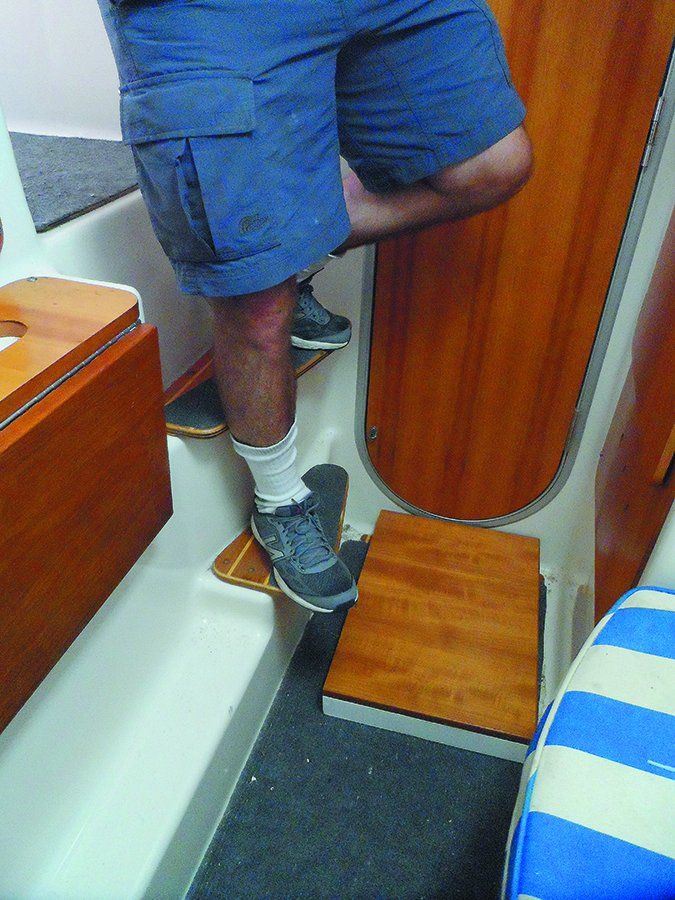
Drew Frye
Weve carried out several tests on non-skid deck coatings and prescribed remedies for slippery cabin soles, but what about textured non-skid tape, or grit-infused tape sold at the chandlery or hardware store? In the August 2018 issue, we tested stick-on vinyl coated tape, and media-coated grip tape.
We found several locations where stick-on, vinyl non-skid proved handy for anti-slip applications-as well as for protecting gelcoat that is frequently rubbed, bumped, or scraped. Both Life Safe and Seafit textured vinyl performed well in our comparison, with Seafit adhering slightly better over the long term.

For even better grip, the media-coated grip tape 3M Safety Walk #310 tread can scrape bare skin, but the course grit does a great job of preventing slips and falls. The loss of traction, if it occurs at all, is not as sudden and complete as it is with textured gelcoat or vinyl coated grip.
Gill Knee Pads

Drew Frye
Cruising sailors spend a more time on their knees than most people imagine, but the features we expect in our pads are specialized. We want quick-drying, non-slip knee pads that can take a beating.
Our test in the July 2018 issue included equipment from Gul, Gill, and Musto that caters to racing sailors, as well as knee pads designed for other activities such as Mizuno (volleyball), and Husky (construction).
For sailing, the adjustable and very hard wearing Gill Knee pads came out on top. For the boatyard, the Husky hard cap knee pads provide heavy duty protection for bottom work and the like.
Copper-free Bottom Paints Shine in Freshwater
Most of our recent antifouling paint testing has taken place in saltwater Sarasota, Florida, but in 2017 we included a test of eco-friendly paints on Lake Superior. These were primarily copper-free paints that used either zinc, the pesticide Econea, or a combination of the two to prevent growth. A few were slick coatings that contained no metals for biocide.

Mahina Expeditions
0)]
Of the sample group, three paints stood out as the cleanest at the end of one year: TotalBoat Krypton, Pacifica Plus, and Mission Bay CSF.
TotalBoat Krypton from Jamestown Distributors is a copper-free ablative antifouling paint that protects against hard and soft growth. Krypton uses the Johnson & Johnson biocide Econea (tralopyril) to ward off barnacles and zebra mussels, plus zinc omadine to combat slime. Made by Flexdel, it contains 5.2 percent Econea and 4 percent zinc omadine by volume.

Mahina Expeditions
1)]
Pacifica Plus from Interlux is a fast-drying copper-free alternative that also uses dual biocides. The sample in our test listed the active biocides as 3.9 percent Econea, and 4.1 percent zinc pyrithione by volume. The current Pacifica Plus, however, does not mention zinc, but lists another ingredient Biolux, which is Interluxs name for Irgarol, an anti-microbial pesticide manufactured by BASF. Irgarol was recently reintroduced to the U.S. after some delays with re-registration with the US Environmental Protection Agency. During its absence from the market, some makers used zinc omadine instead.

Seahawk Paints Mission Bay CSF is free of copper and solvents. It is an ablative, self-polishing antifoulant that relies on the steady release of zinc pyrithione to prevent growth. According to Sea Hawk, the paint uses nano-based technology that is UV activated to control the release. It does not contain Econea or Irgarol, making it more affordable than some competitors.
Sticky Sealants and Stuff to Unstick Them
Last year gave us an opportunity to revisit the do-it-yourself sailors conundrum when joining materials: the bond we never want to fail will one day need de-bonding.

Mahina Expeditions
2)]
Adhesive Sealants
Following up on long-term test of adhesive sealants featured in the December 2016 issue, we published a one-year update in January 2018. The primary focus of the long-term test was to evaluate above-the-waterline bond strength of various adhesive sealants, primarily polyurethane or polyether blends that touted strong adhesive and sealing properties and resistance to dirt and weathering.
In the end, two products stood out, the polyurethane adhesive sealant Sikaflex 291, and the polyether, Loctite PL Marine.
Sikaflex 291s performance was similar to the popular 3M product 4200 Fast Cure, but with more consistent bonding. It attracted more dirt than other caulks, but the dirt was not embedded and rinsed away.
A polyether, Loctite PL Marine has a formula similar to that of 3M 4000 UV. It performed on par with Sikaflex 291, delivering consistent bonding and weather resistance. It stayed slightly cleaner, had good flexibility, and costs less.

Mahina Expeditions
3)]
Debonders
In an update to our January 2017 wide-ranging test of adhesive removers, we zeroed in on 3M 5200, looking for an antidote to its tenacious fiberglass-to-fiberglass bond.
We also changed our technique. Instead of simply spraying the remover on the caulk surface, we first scored and slightly peeled a corner of each sample with a razor knife. After 10 minutes of dwell time, we went to work with a putty knife. DeBond Marine Formula was the only remover in the follow-up test that effectively broke the 3M 5200 bond, given time and the right pre-application scoring.
COMPANY WEBSITES
3M
Antal
Armacell
Bainbridge Sails
Davis
Dometic
Forespar
Gill
Green Grease
Life Safe
Loctite
Mobil 1
Oxiclean
Re-Mov
Seafit
Star Brite
Tef-Gel
Congratulations to all of our Gear of the Year Winners!






































